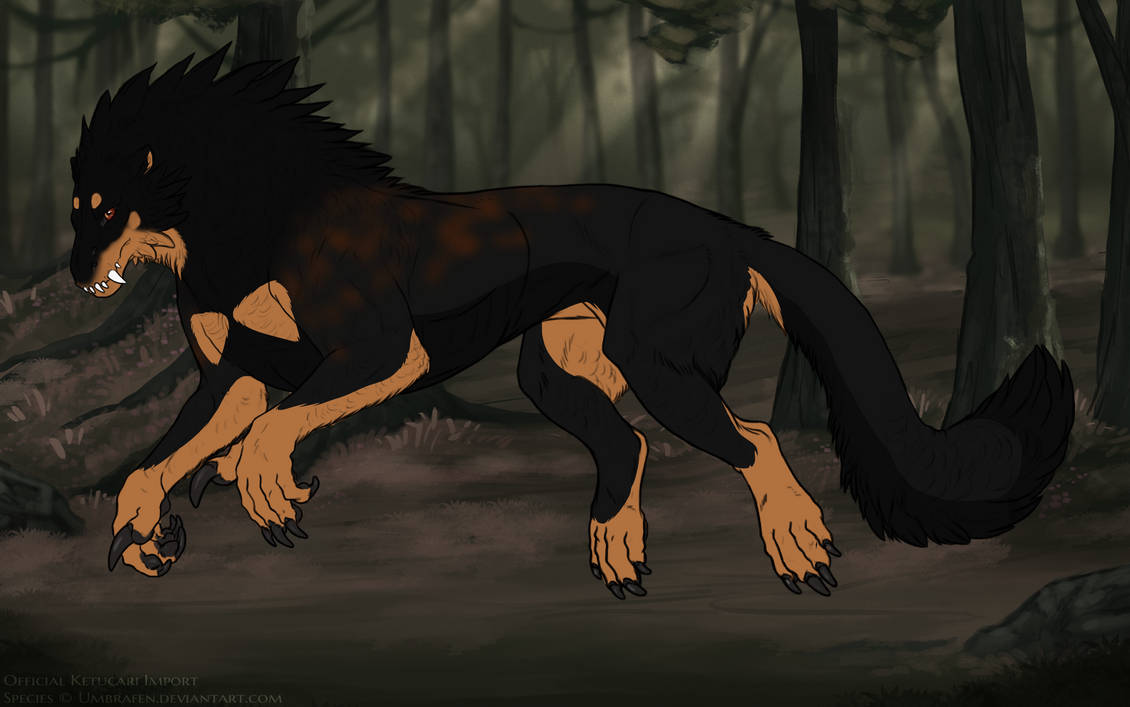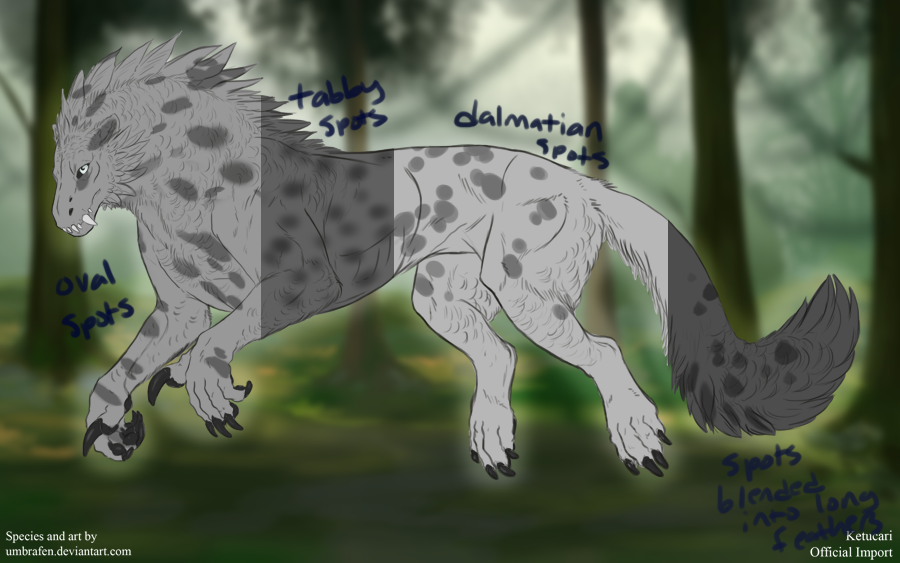Rust
Examples







Basics


Rust follows the same rules as spotting, but is orange, bronze, or red in color.

In your ketucari's genotype, rust is denoted by the letters "nRt" (heterozygous) or "RtRt" (homozygous).

In its heterozygous form, rust has a pass rate of 40%. Homozygous rust has a 65% pass rate.
Color and Shape

The color of rust does not have to be picked from any base color swatches. As long as it is undeniably orange, bronze, or red, it will pass.
Shapewise, rust can have soft or hard edges. Rust can have any of the shapes below. A single ketucari can have a combination of different spot types. In long feathers, the rust may be a bit blended or "stretched out" to show the texture of the feathers.

Here are the minimum and maximum sizes for rust spots:

Range

Rust spotting can appear anywhere on the body. It has no minimum or maximum range, but must be immediately noticeable in the design.
Interaction with Other Markings


All markings can be layered under or over rust.

Rust may influence or be influenced by
marbling.

If a ketucari has both marbling and rust, the markings may combine to make bronze, red, or orange rosettes.
Alternatively, the rust may simply change the color of marbling to one of those shades.

The maximum and minimum sizes for rosettes are as follows:


If a ketucari has strand, marbling, and rust, the three may be combined to make a pattern similar to a king cheetah

Accents

Here are some small accents you can add to your designs to make them more unique!

Rust spots may have a subtle gradient like below:


Rust spots can have some slight texturing around the edges like the examples below.













